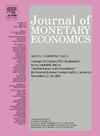不确定性和分歧的周期性
IF 4.3
2区 经济学
Q1 BUSINESS, FINANCE
引用次数: 0
摘要
实证文献经常使用分歧(预测的离散性)来代表不确定性,但在整个商业周期中,分歧和不确定性的表现是不同的。这种差异在非危机时期尤为突出,在非危机时期,分歧度量与经济增长呈正相关,而不确定性度量与经济增长呈负相关。我用一个具有内生学习功能的噪声信息模型来解释这一发现。在该模型中,代理人观察到的是有噪声的私人信息,但只有在他们活跃时才能观察到。在不确定性固定不变的情况下,活动的增加会给市场带来噪声信息,代理人的信念会出现分歧,即分歧会增加。本文章由计算机程序翻译,如有差异,请以英文原文为准。
Cyclicality of uncertainty and disagreement
The empirical literature often uses disagreement (dispersion in forecasts) as a proxy for uncertainty, yet disagreement and uncertainty behave differently throughout the business cycle. The difference is especially salient in non-crisis periods, in which measures of disagreement are positively correlated with growth, while measures of uncertainty are negatively correlated with it. I explain this finding using a noisy information model with endogenous learning. In the model, agents observe noisy private information, but only when they are active. Holding uncertainty fixed, a rise in activity introduces noisy information to the market, and agents’ beliefs diverge, i.e., disagreement rises.
求助全文
通过发布文献求助,成功后即可免费获取论文全文。
去求助
来源期刊

Journal of Monetary Economics
Multiple-
CiteScore
7.20
自引率
4.90%
发文量
90
审稿时长
74 days
期刊介绍:
The profession has witnessed over the past twenty years a remarkable expansion of research activities bearing on problems in the broader field of monetary economics. The strong interest in monetary analysis has been increasingly matched in recent years by the growing attention to the working and structure of financial institutions. The role of various institutional arrangements, the consequences of specific changes in banking structure and the welfare aspects of structural policies have attracted an increasing interest in the profession. There has also been a growing attention to the operation of credit markets and to various aspects in the behavior of rates of return on assets. The Journal of Monetary Economics provides a specialized forum for the publication of this research.
 求助内容:
求助内容: 应助结果提醒方式:
应助结果提醒方式:


